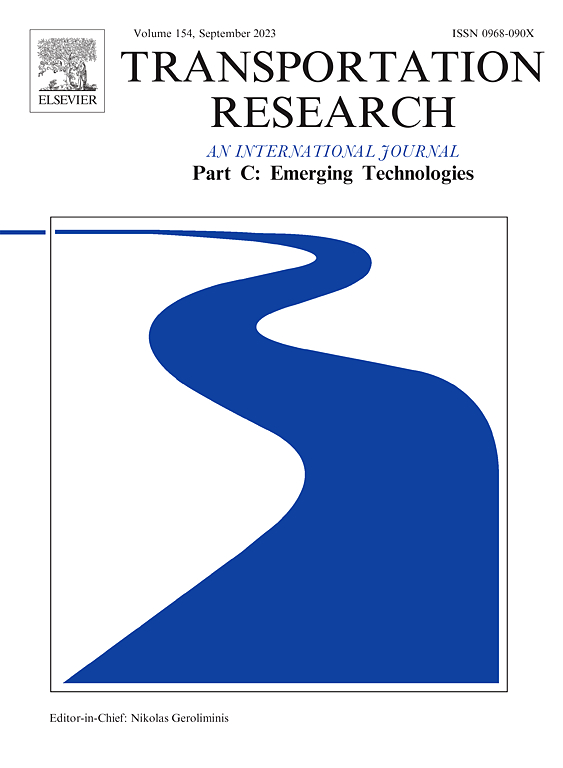Rolling stock rescheduling in high-speed railway networks via a nested Benders decomposition approach
IF 7.6
1区 工程技术
Q1 TRANSPORTATION SCIENCE & TECHNOLOGY
Transportation Research Part C-Emerging Technologies
Pub Date : 2025-02-01
DOI:10.1016/j.trc.2025.105001
引用次数: 0
Abstract
This paper addresses a rolling stock rescheduling problem (RSRP) during disruptions in a high-speed railway network, focusing on decisions related to the reassignment of physical rolling stock units to trips, deadheading schedules, and maintenance plans and schedules, while taking into account deadheading trips and maintenance requirements. A mixed integer linear programming (MILP) model is formulated, leveraging a directed acyclic graph to represent all feasible connections for each rolling stock unit. The objective is to minimize the weighted sum of canceled trips, schedule deviations, and various service quality and cost indicators. An exact nested Benders decomposition (NBD) algorithm is developed to solve this model. In the algorithm, the RSRP is first decomposed into an outer integer master problem (OMP) and an outer integer subproblem (OSP). The OMP is then divided into an inner integer master problem (IMP) and an inner integer subproblem (ISP), and is solved using the logic-based Benders decomposition (LBBD) algorithm, where strengthened feasibility cuts and optimality cuts, as well as valid inequalities, are added to the IMP to enhance the algorithm’s performance. The OSP, a feasibility problem, is further decomposed into many easier problems at each depot. Subsequently, three implementations including two branch-and-check type approaches and one LBBD approach are customized to solve the outer decomposition problem. We also propose a three-stage approach to solve the IMP, ISP, and OSP, sequentially. The approaches are tested on a set of instances constructed from the high-speed railway network in China. The results show that the approaches can quickly find (near-)optimal solutions for tested instances within a short computation time of several minutes, making it suitable for real-time rolling stock rescheduling applications.
求助全文
约1分钟内获得全文
求助全文
来源期刊
CiteScore
15.80
自引率
12.00%
发文量
332
审稿时长
64 days
期刊介绍:
Transportation Research: Part C (TR_C) is dedicated to showcasing high-quality, scholarly research that delves into the development, applications, and implications of transportation systems and emerging technologies. Our focus lies not solely on individual technologies, but rather on their broader implications for the planning, design, operation, control, maintenance, and rehabilitation of transportation systems, services, and components. In essence, the intellectual core of the journal revolves around the transportation aspect rather than the technology itself. We actively encourage the integration of quantitative methods from diverse fields such as operations research, control systems, complex networks, computer science, and artificial intelligence. Join us in exploring the intersection of transportation systems and emerging technologies to drive innovation and progress in the field.

 求助内容:
求助内容: 应助结果提醒方式:
应助结果提醒方式:


